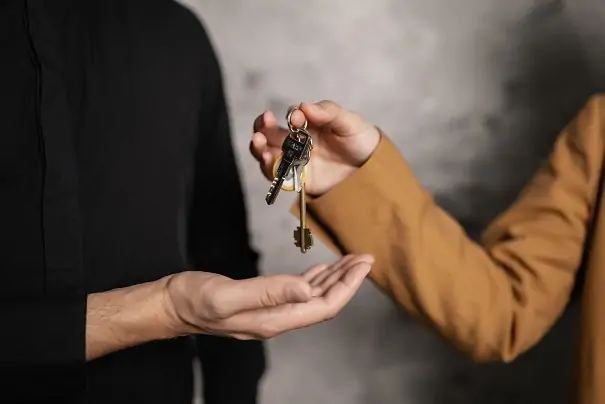
A quitclaim deed is a simple form that transfers a piece of real estate from one person to another. Any homeowner can fill out a quitclaim deed with their name and the name of the recipient, and the property’s existing legal description, sign it in front of a notary and record the document. That effectively and quickly passes a property on. No wonder these forms mistakenly get called “quick claim” deeds.
Yet quitclaims are not a good pick for most property conveyances. Read on to learn more.
Filling Out a Quitclaim Deed Isn’t Proof of Ownership.
A notary and a county recorder do not prove a transfer is valid. These officials do not verify that the person quitclaiming property really owns it. That’s why the simplicity of a quitclaim can be a pitfall.
Unlike a warranty deed, a quitclaim makes no guarantees about what is being transferred. This is the key concern with a quitclaim.
Because a quitclaim isn’t a promise that the transferor owns the property or a share in the property, it is not useful for most regular transactions.
A Quitclaim Carries No Promise of Clear Title.
In contrast to a warranty deed, a quitclaim needs no title search. This means the person on the receiving end of a quitclaim deed gets no assurances that the transferor holds the property free and clear.
The quitclaim deed does not cancel out any other claims others might have. So, a buyer who gets a quitclaim with no warranty (which could happen in a tax sale, for example), is taking the risk of accepting a defective title.
Buying a home in a regular, arms-length transaction? A warranty deed is standard, and it’s the least risky for a new homeowner. A quitclaim, by itself, does nothing to resolve any liens that might burden the property.
Quitclaims Can Be Too Easy to Use.
Scammers like quitclaims because they can be filled in and recorded without any title examiner looking for issues.
It can be easy to:
- Scour the internet and find enough information to pretend to be the homeowner.
- Press older homeowners to quitclaim their property.
- Find second homes left unattended, or with outstanding tax bills.
Criminals have been known to pay taxes, head off foreclosure, and stake their claims to elders’ homes. Some deed thieves even pretend to be personal representatives of dead people’s estates.
Mortgage Relief Scammers Can Make Use of Quitclaims to Take Property.
Some scammers use quitclaims to cheat people who are late with mortgage payments. The tricksters have a number of methods to find distressed homeowners and press them to quitclaim their homes in exchange for a mortgage rescue.
True mortgage assistance businesses do not demand the deed. Nor should a homeowner send money in exchange for relief from paying the mortgage.
Under the Mortgage Assistance Relief Services (MARS) Rule, businesses cannot charge homeowners until they produce an offer, on paper, for a loan modification from the existing mortgage lender. This is why struggling borrowers should talk to their loan servicers directly.
Quitclaiming to Avoid Probate Has Pitfalls.
Many people want to be sure their homes pass, after death, to people they choose. An easy way to do it is with a quitclaim.
Homeowners should prepare for the IRS to look carefully at a gift of real estate.
Note also that quitclaiming a home can mean the recipient will later pay more taxes when selling. Using a will produces a “stepped up” cost basis for the heir. That reduces the tax on capital gains down the road.
Unrecorded Quitclaim? Not a Good Move.
Another risky move on a homeowner’s part? Filling out a quitclaim and holding it so someone else can record it upon the homeowner’s death. Whether the recipient of the home proactively records it before the death, or “pockets” the deed until the homeowner dies, expect tax consequences and title issues. Worse-case scenario: a quitclaim challenged in court as an undisclosed deed. It can happen — especially if the deceased person was receiving government health benefits.
After the owner’s death, a quitclaim makes no sense. It’s a gift that was never completed.
Even in the best-case scenario, a personal representative will need to prove that the quitclaim was legally delivered. So much for avoiding bureaucracy!
There Are Other Ways to Get Around Probate.
Some people use a quitclaim to avoid a will. They’d rather not put their homes through the time, cost, and scrutiny of probate. As the American Bar Association explains, probate has value for many people. It might be better to have than to avoid.
That said, there are alternatives to the quitclaim deed that do avoid probate:
- In some jurisdictions (example: California), using the interspousal grant deed means spouse-to-spouse transfers don’t incur transfer taxes or trigger new property tax assessments. This makes the interspousal deed helpful in divorce situations. When drafting a quitclaim instead, the advice of a divorce lawyer is important. With a quitclaim, the transferor could still be on the hook for the mortgage and other liens recorded against the home.
- There’s also a revocable living trust. In fact, a quitclaim is frequently used to put property into trusts and LLCs. A trust could be right for the homeowner who wishes to hold property for family members or others. Avoiding probate by creating a trust is not entirely possible, nor should the trust creator want it to be. A pour-over will can send any loose assets into the trust when the owner dies.
- A growing number of states allow homeowners to use a revocable transfer on death deed to pass real estate on to a designated person. When prepared correctly, signed, notarized, and recorded, it does its work upon the homeowner’s death.
Note that the named recipient may refuse a deed — in which case, the conveyance has not legally happened. This makes it a good idea to talk to people when designating them as beneficiaries.
All That Said, in Some Cases the Quitclaim Deed Makes Good Sense.

Quitclaims have good uses. Generally, these are transfers that need no title search and warranty. In some states they are the preferred deed in divorces.
And what if someone might possibly having an ownership right? Say that person is willing to state for the record that they have relinquished all possible claims. Then, a quitclaim makes sense. It proves the homeowner has a free and clear title with respect to that person.
The quitclaim is also a simple tool to take a co-buyer off the deed at a planned time.
Quitclaims are common in transfers of homes from parents to children, or between siblings, too. Just be sure potential drawbacks are not in play.
How to Make a Quitclaim Deed
Deeds.com can help you make your quitclaim deed if the situation calls for it. Follow the link to get started preparing the document for your location. Each situation is case-specific and must follow state law; speak to a real estate or estate planning lawyer for personal guidance.
Supporting References
Deeds.com: Don’t Quit Your Claim! A Quitclaim Deed Is Not a Mortgage Saving or Estate Planning Tool (Apr. 26, 2019).
Deeds.com: The Quitclaim Deed and Fraudulent Real Estate Transactions (Mar. 11, 2019).
And as linked.
Photo credits: Andrea Piacquadio and Alena Darmel, via Pexels.
